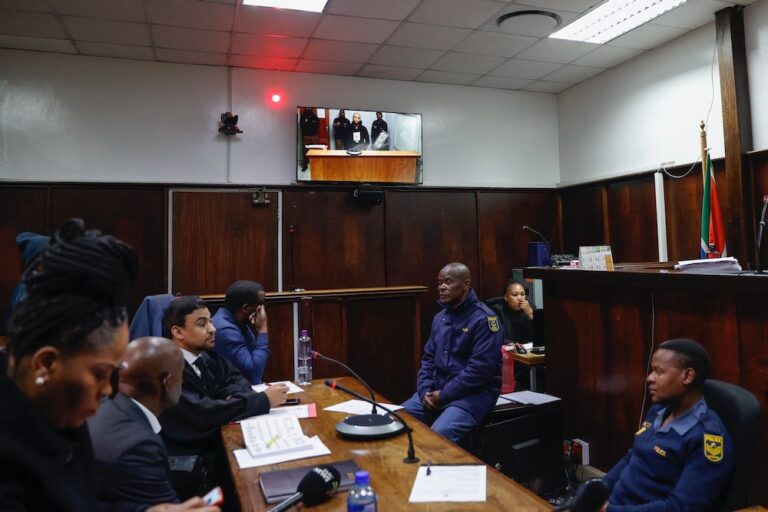(FXI/IFEX) – The following is a 19 February 2007 FXI media release: Media Release: Freedom of Expression central to Nose Stud case, says FXI South Africa’s Constitutional Court heard arguments yesterday and today on the appeal by the Kwa-Zulu Natal provincial Minister of Education (and others) against a High Court decision in favour of school […]
(FXI/IFEX) – The following is a 19 February 2007 FXI media release:
Media Release: Freedom of Expression central to Nose Stud case, says FXI
South Africa’s Constitutional Court heard arguments yesterday and today on the appeal by the Kwa-Zulu Natal provincial Minister of Education (and others) against a High Court decision in favour of school pupil Sunali Pillay’s right to wear a nose-stud to school. The FXI was admitted as amicus curiae and presented written and oral argument arguing that the matter was also one of freedom of expression.
In 2005, Navaneethum Pillay took the Durban Girls’ High School to the Equality Court for its decision that her daughter, Sunali Pillay, was not allowed to wear a nose ring because it violated school rules. Pillay lost the case. The case subsequently was heard in the Natal High Court, which ruled in Sunali Pillay’s favour. The school and the provincial Minister of Education then appealed the case in the Constitutional Court.
The FXI believes the decision of the school to prohibit Sunali Pillay from wearing her nose-stud raises questions of public importance which are new in our law. The school’s decision impacts on the rights to equality, freedom of religion and freedom of culture, as enshrined in the Constitution. The FXI believes that the right to freedom of expression is also implicated by the school’s decision.
The FXI submitted that the decision by Sunali Pillay to wear the nose-stud constituted an exercise of her freedom of expression. This right flows directly from section 16(1) of the Constitution. The right to freedom of expression also flows from the provisions of the two sets of regulations issued by the Minister of Education in terms of the South African Schools Act 84 of 1996. Both sets of regulations are relevant to any determination of this matter and both suggest that Sunali Pillay’s right to freedom of expression has been implicated by the decision of the school.
In light of this, the FXI submitted that Sunali Pillay’s decision to wear the nose-stud fell within freedom of expression as defined in the regulations. Under both sets of regulations, it would only be appropriate to prohibit Sunali Pillay from wearing the nose-stud where this would lead to the “substantial” “disruption” of school activities.
The FXI does not believe that there was any danger of the wearing of the nose-stud resulting in the substantial disruption of school activities. As such, the decision to prohibit the nose-stud was in conflict with Sunali Pillay’s right to freedom of expression contained in the regulations.
In light of the above, the FXI therefore submitted that the case involved the intersection of four fundamental rights: the right to equality; the right to freedom of religion; the right to freedom of culture; and the right to freedom of expression.
Thus the limitation on freedom of expression resulting from the school’s conduct is particularly severe. It involves expression aimed at exercising other fundamental rights in the Bill of Rights – namely the right to freedom of religion and the right to freedom of culture.
The FXI therefore contended that this matter ought properly not to be decided without reference to Sunali Pillay’s right to freedom of expression. This is notwithstanding the fact that the original claim brought by the respondent (a layperson without legal assistance) was under the Equality Act (the “Promotion of Equality and Prevention of Unfair Discrimination Act 4 of 2000”).
If courts are precluded from taking into account freedom of expression in appropriate cases under the Equality Act, this would place an intolerable and unnecessary burden on the litigants that the Equality Act is meant to protect. The Equality Act was, after all, enacted to make litigation on issues of equality easier, rather than more cumbersome. Yet many issues of equality will involve other fundamental rights including dignity, expression, privacy and others. It could surely not have been the intention of the drafters to preclude litigants and courts from having regard to such rights merely because a case began as a matter under the Equality Act.


